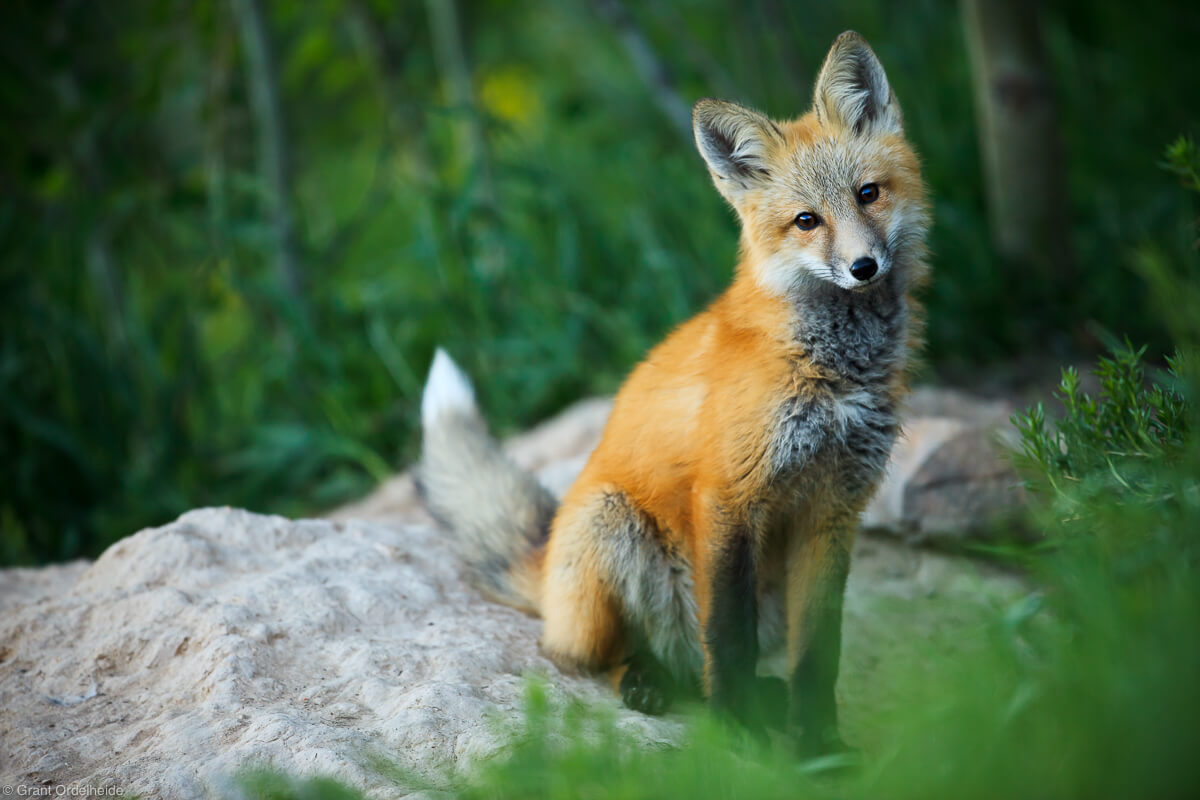Wildlife photography is one of the more challenging genres in photography. So many things have to go right to capture a truly unique image, and often the photographer has no control over over those things. It doesn’t always work out, but when it does, the feeling is very rewarding. Here are a few simple tips to help improve your wildlife photography.
All images by Grant Ordelheide.
Research Best Times and Places
The first thing you can do to help put yourself in a position to succeed is to understand when and where animals are going to be. This isn’t an exact science, but there are ways to give yourself the best odds at seeing interesting behavior. Do research on individual animals and places. Some animals hibernate through the winter or aren’t as active during the hot summer months. Others are easier to spot during mating season. Understanding the patterns of a specific location or species can help you to plan your visit during the most active period.
During the fall, bull moose are out and actively looking for females to mate with and males to spar with, making autumn the ideal time to photograph them.

Understand Animal Behavior
While no one can fully predict what an animal’s next move will be, understanding behavior patterns and body language can help put you in position for successful a photo. Watch your subject carefully and take note of the way they move, hunt, and interact with others. Having this information can help you stay one step ahead, predicting the animals moves and nailing the shot.
As I sat and watched this bear hunt for salmon, I paid close attention to his body language just before he took off after a fish. Eventually I was able to predict when he would start running and was able to get in front of him upstream and make this image.
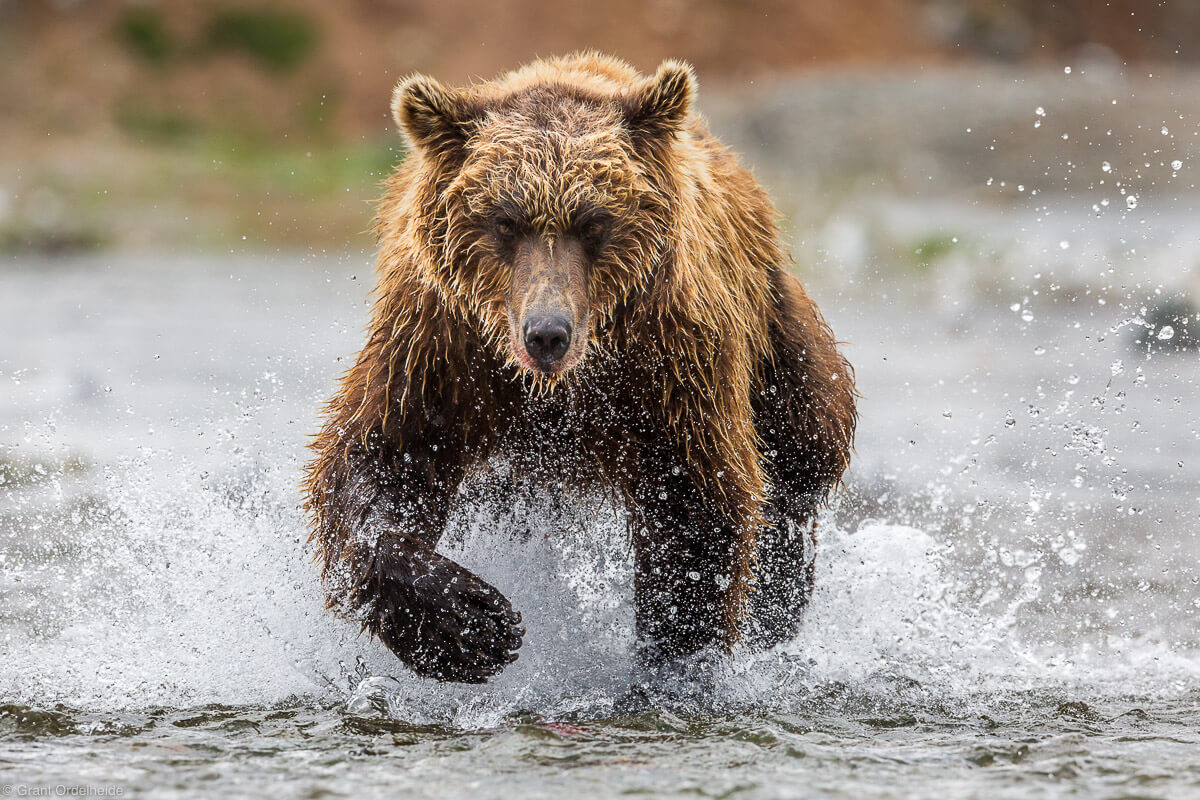
Eye Contact
Eye contact is a critical component of wildlife photography. Rarely does anyone want to see pictures of an animal’s backside. The eyes and face are a focal point, so being able to clearly see them gives your viewer’s eyes a place to go. Eye contact also can help show personality and lets the viewer connect with the animal.
Being able to look straight into the eyes of this lion help to convey a sense of intimacy and the personality of the animal.
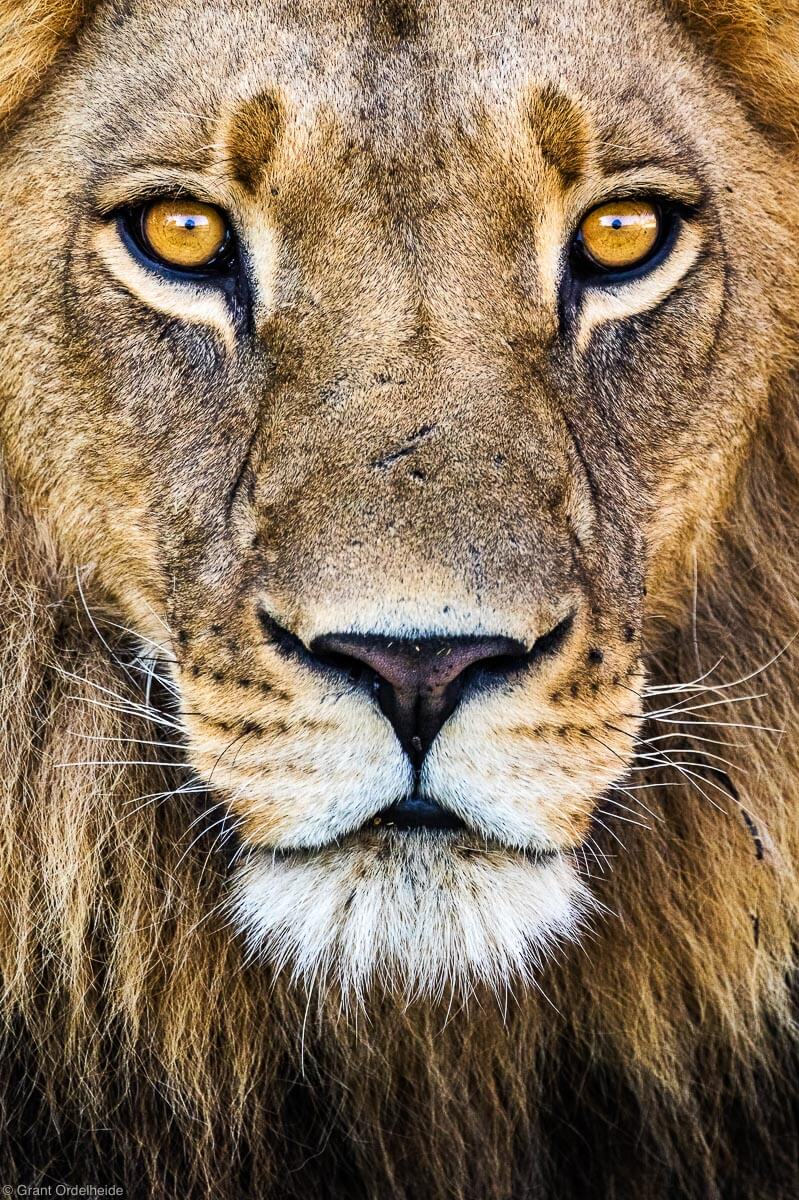
Background
One of the most important elements to wildlife photography is the background. It is easy to overlook while focusing on the animal, but the right background can be the difference between a good and great photo. Whether it is in focus or completely blurred, it is important that nothing in the background competes with the subject. The background should make sense with the subject and shouldn’t include any distracting elements. After I find wildlife, the next thing I do is start looking for a clean background and try to position myself to place it behind the animal.
By positioning myself downstream of these bears, I was able to create a clean and simple background that complemented the foreground animals.
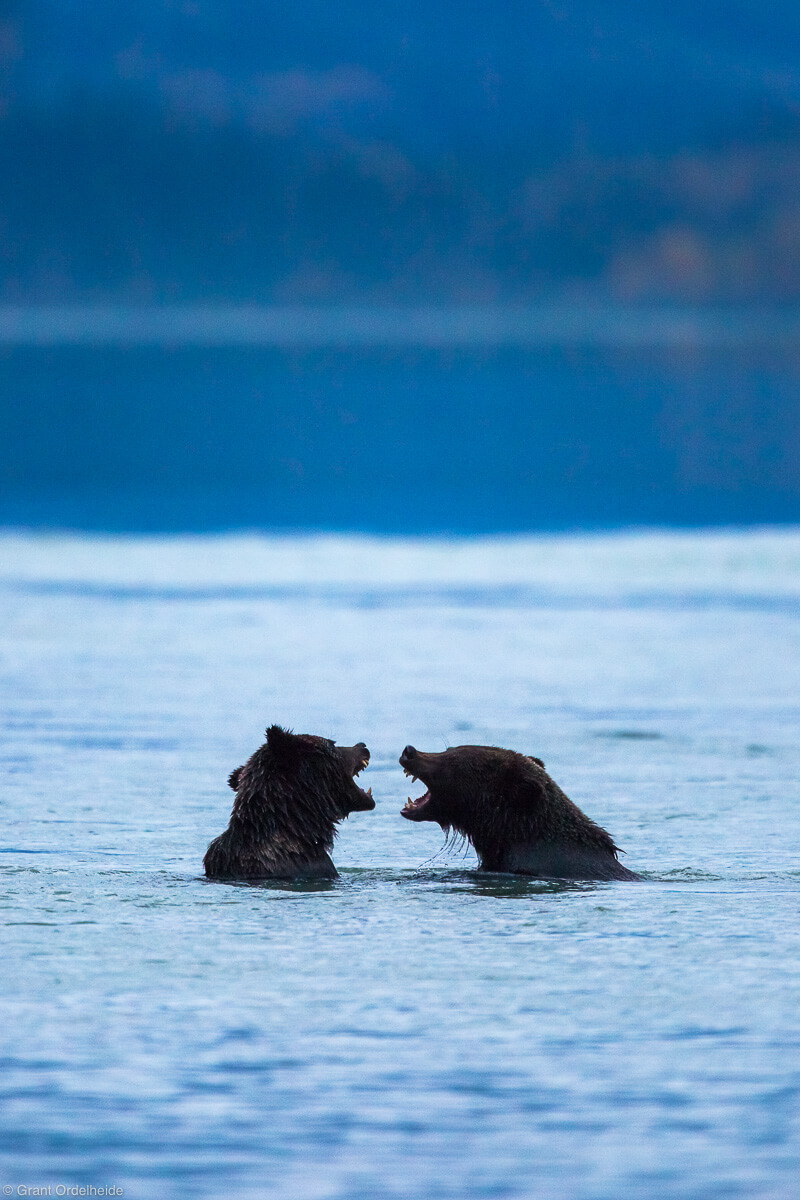
Light
Like all forms of photography, light is the most critical element to a successful photo. Shooting in the morning and evening will ensure that when you do find wildlife, the light will be easier to work with. In addition to better light, most animals are more active early and late in the day.
A large bull elephant bathed in sunset light. This image would not work as well if it had harsh shadows from mid day light across his face.
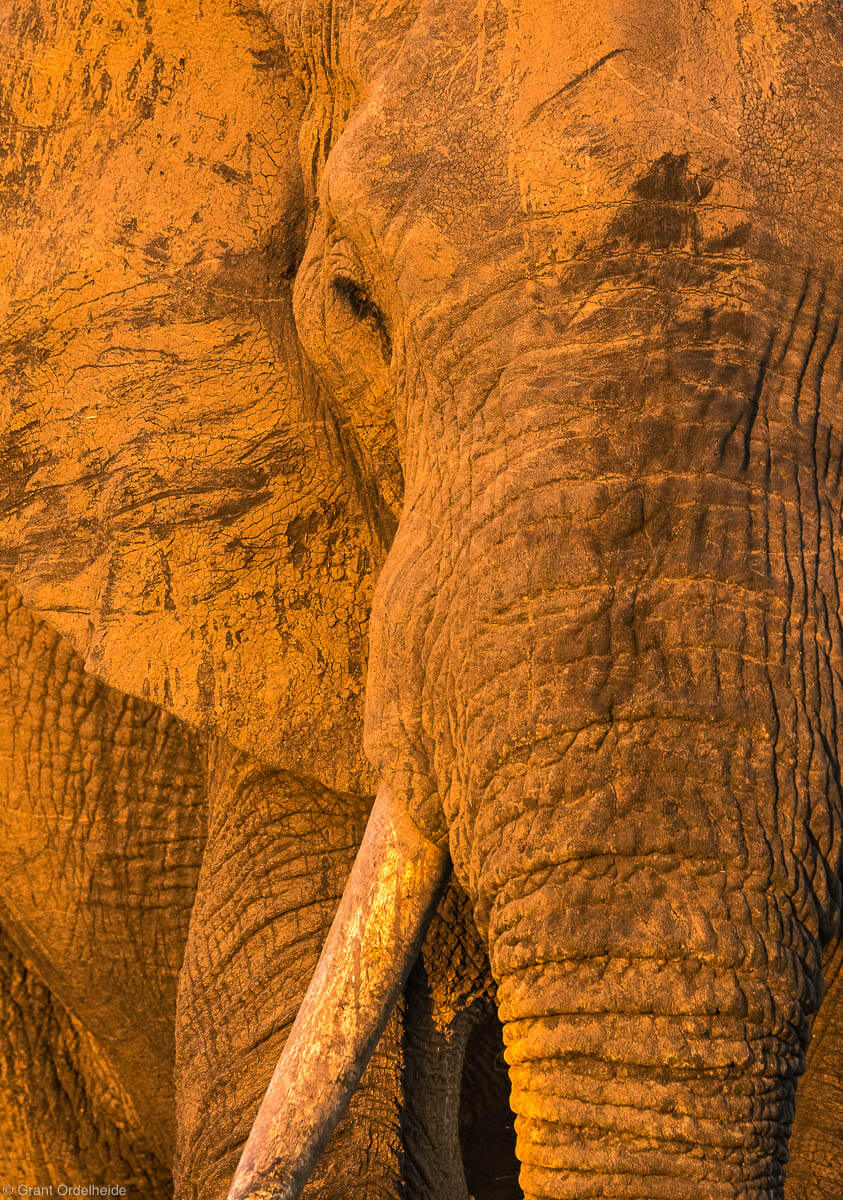
Decisive Moment
Use continuous shooting or burst mode on your camera to make sure you don’t miss the decisive moment. As the action occurs, continue shooting, paying close attention to the animal’s features, body position, surrounding, etc. Very often, out of a set of twenty pictures, only one frame has the perfect moment. Stay ready; don’t get distracted by your phone or your friend because you never know when that decisive moment will come and go.
By photographing the entire chase sequence, I was able to capture this fleeting moment where the fish popped above the water with the bear in pursuit.
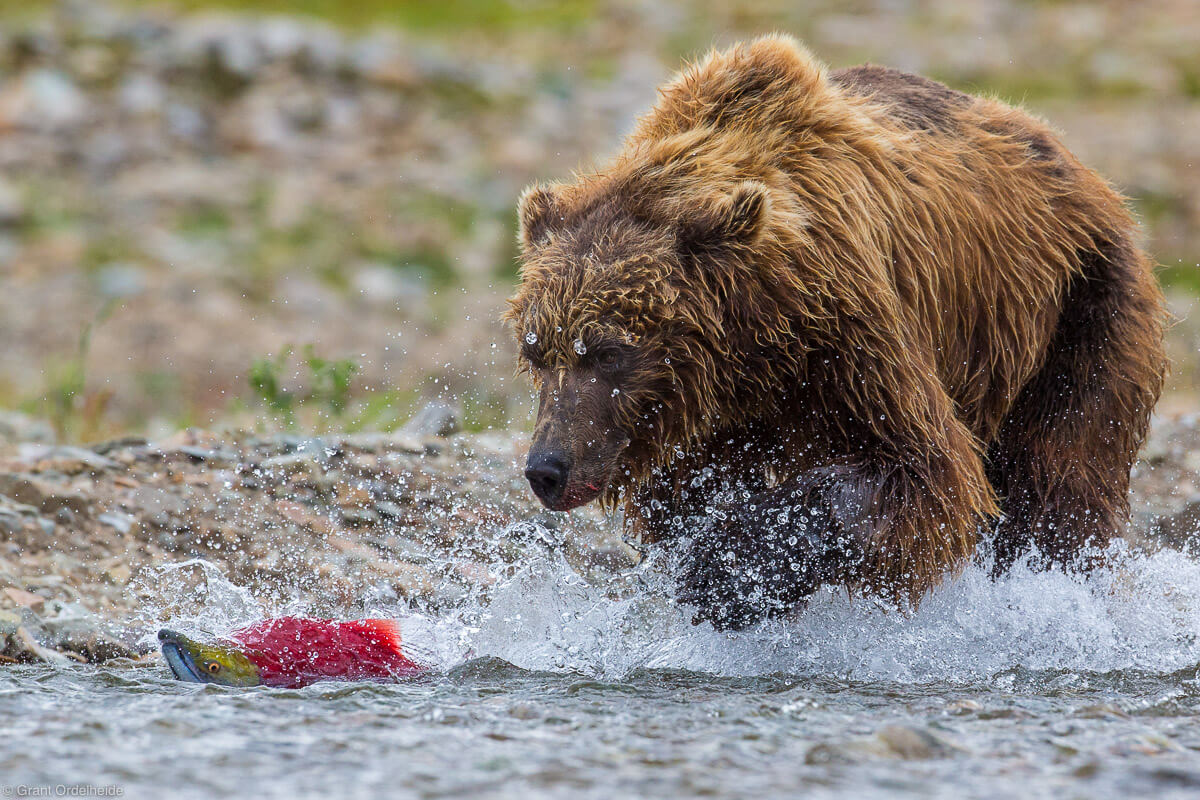
Weather
Don’t go inside when the weather turns bad. The atmospheric conditions provided by rain and snow can really add a special element to a wildlife photo. Use a rain cover, umbrella, or shoot from a car to keep your equipment dry.
The falling rain in this image adds an extra element to complement the pronghorn and tell a more complete story.
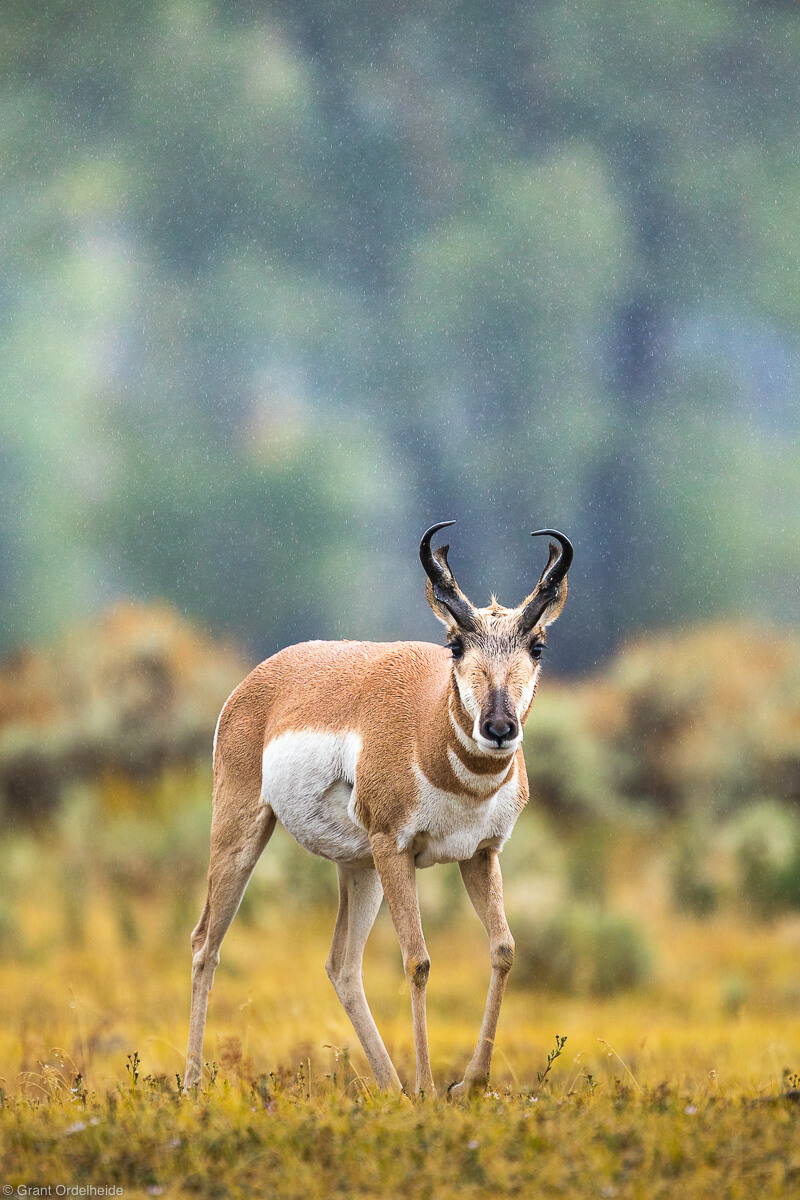
Motion Blur
Most of the time, wildlife photographers try to use the fastest possible shutter speed to freeze the action. Don’t forget to experiment with different shutter speeds and panning motions to show action and motion in a different way.
By using a slower shutter speed, I was able to pan my camera with the moving African wild dog to create an image that shows the movement of the animal.
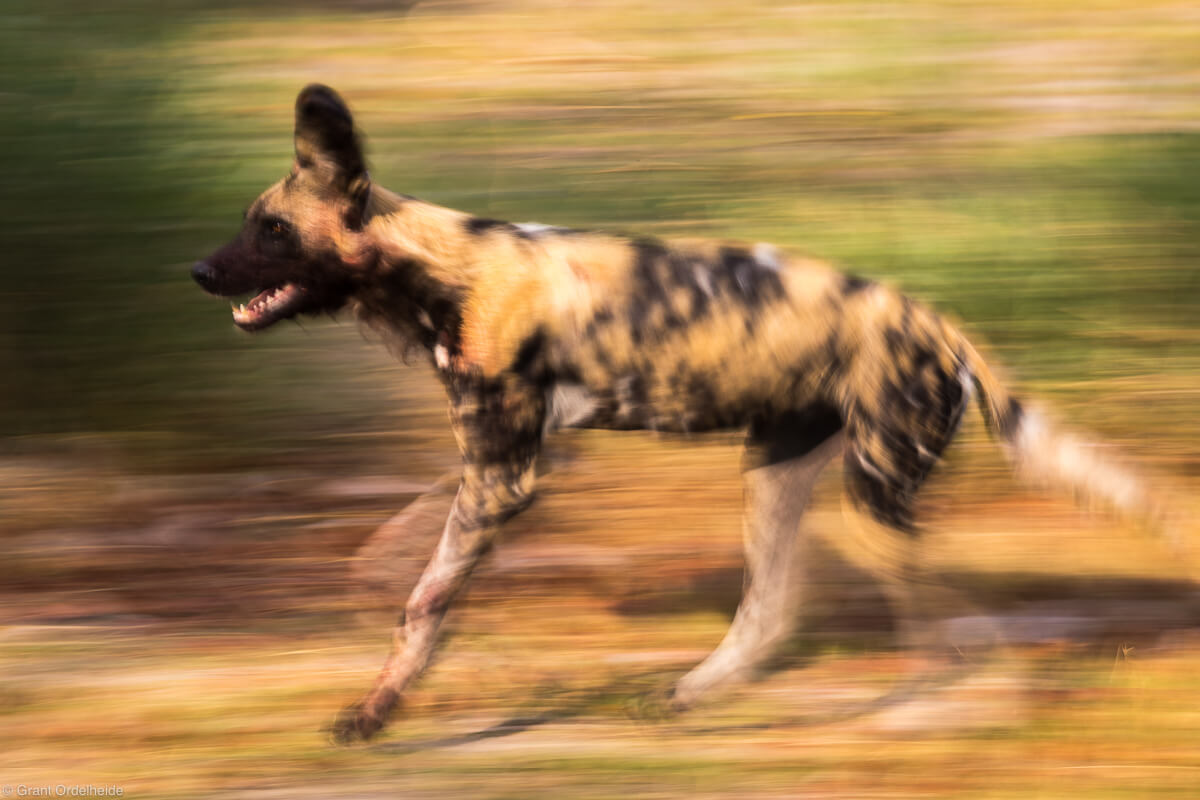
Context
Remember to shoot wider scenes as well. Give context to the animal by showing its habitat and surrounding. These types of images help to tell a more complete story and are often my favorite images from a trip.
By including a larger section of the tree, the viewer gets a better perspective as to what this leopard’s environment is and how she interacts with it.
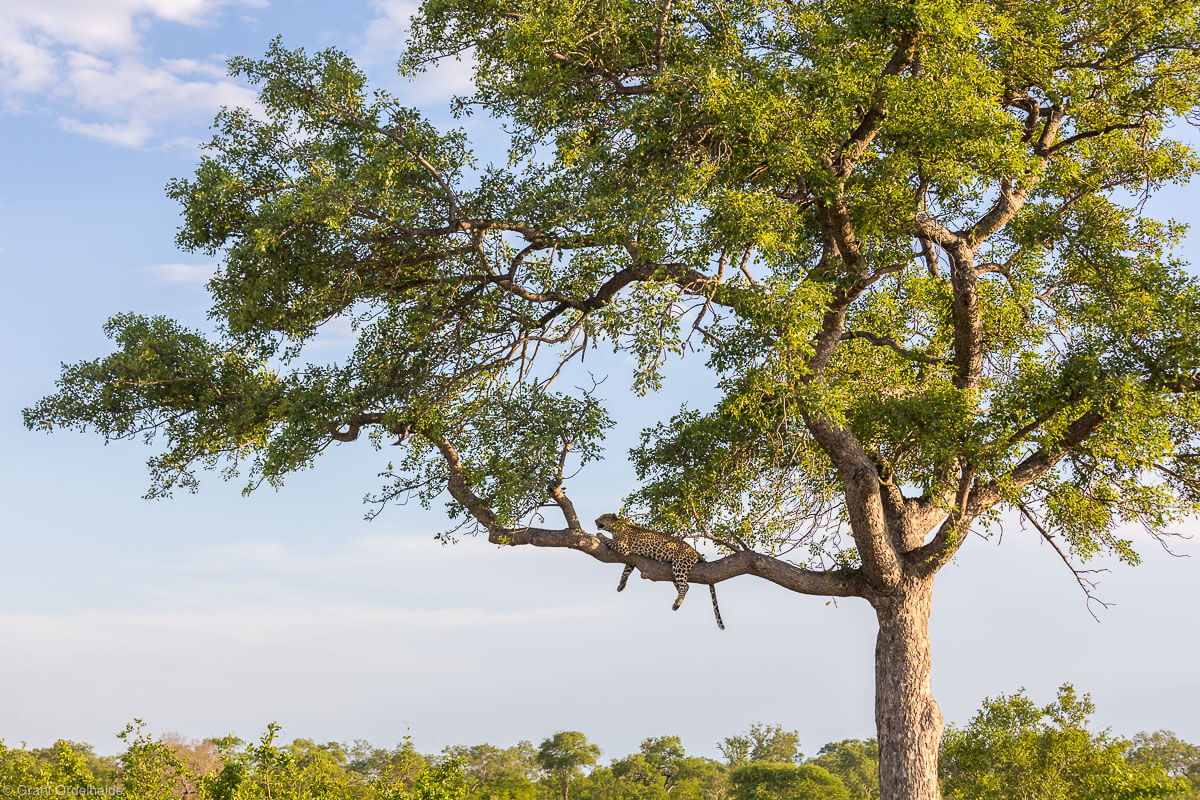
Respect
Wildlife photographers should aim to photograph the animals as naturally and as unobtrusively as possible. You do not want to get too close to an animal or force it into an uncomfortable situation. Stressing out an animal to “get the shot” is never worth it and can have a lasting impact in how that animal interacts with humans. A relaxed and calm animal will also yield better and more natural images. Be patient, don’t cause the animal stress, and have fun out there!
Give wildlife the proper distance as not to stress them out. Here I used a long telephoto lens so I could stay at an appropriate distance.
